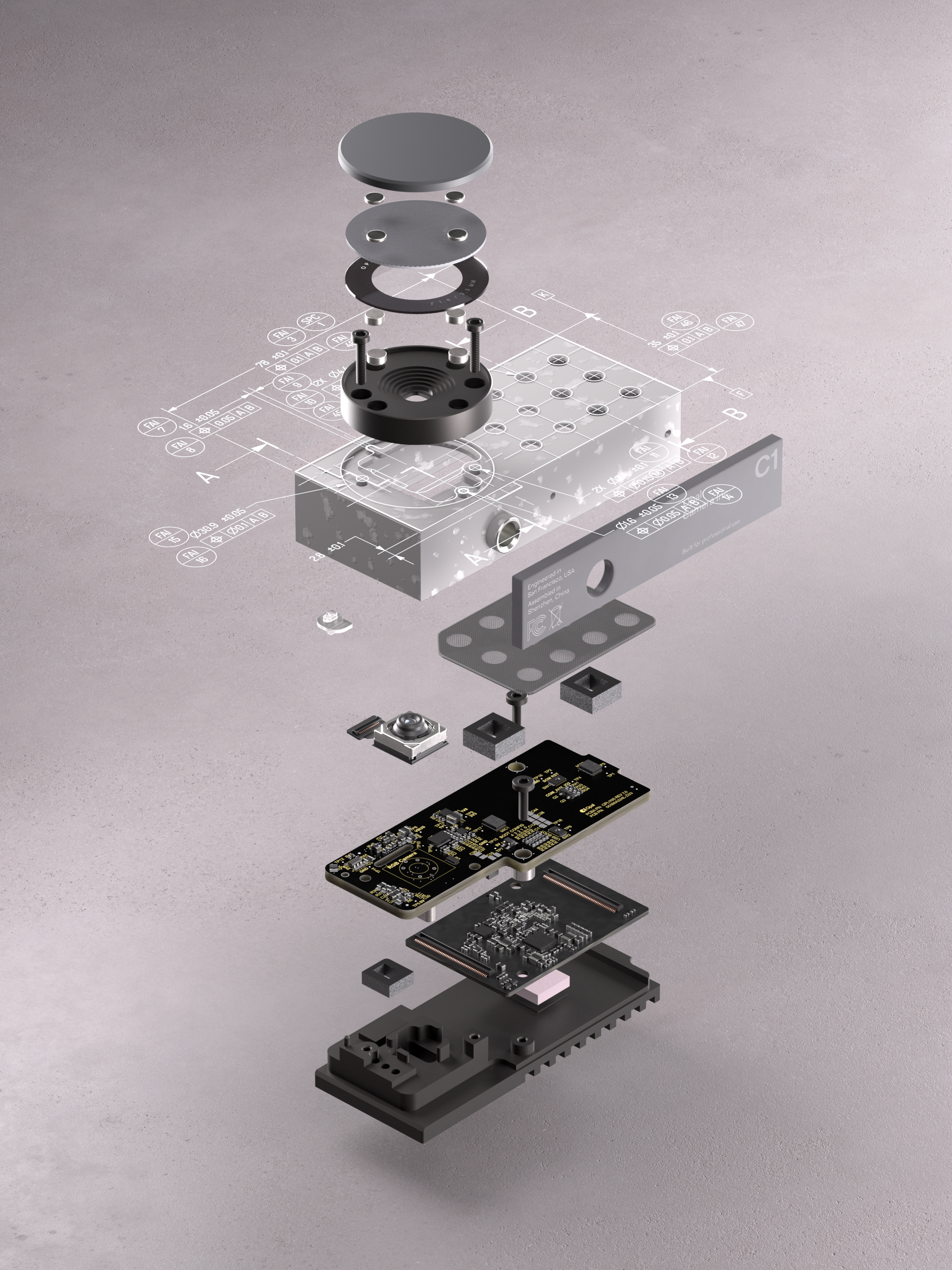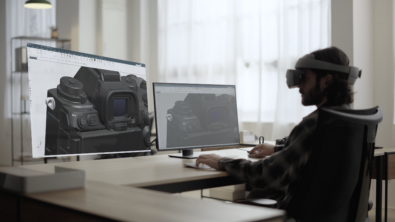End-to-end product engineering with NX CAD | Maestro Product Design

Welcome to another recap of the Next Generation Design podcast for the episode: Bringing New Innovations to Market with Maestro Product Design. You can watch the full video version of the episode below.
On this episode of the Next Generation Design podcast, host Greg Arnot sits down with Joe Moak, Founder and Chief Engineer at Maestro Product Design and Senior Product Architect at Meta. Together, they explore the intricate world of experience-driven product design, the evolution of engineering tools, and the balance between innovation and manufacturability.
Joe shares his journey from a curious young engineer inspired by a Sony Handycam to leading groundbreaking design projects at Apple and beyond. He discusses how Maestro helps clients across industries—from consumer products to medical devices—achieve high-quality, high-volume production while staying true to their design vision.
They also dive deep into the power of Siemens’ NX CAD, the role of digital twins in product development and how new technologies like immersive design and AI are revolutionizing the way engineers approach problem-solving.
What you’ll learn about in this episode:
What is Maestro Product Design?
Maestro Product Design (Maestro PD) is an experience-driven design and engineering company. They do industrial design, product design engineering and electrical engineering from concept through to production. Founder and Chief Engineer at Maestro PD, Joe Moak, studied mechanical engineering at Cal Poly and worked in the medical devices and consumer products industries prior to beginning his own consultancy company.
Maestro PD works in many different industries with clients who are “aspiring to either level up their current product quality or enter the market at a higher premium price point” quickly. They focus heavily on understanding how each decision along the way in the product development process will affect the end-customer experience.
Joe’s introduction to CAD and NX
Joe was introduced to CAD in 1998 with CADKEY, and since then has used over a dozen different CAD packages. In 2006 when he began working at Apple, he was introduced to NX, and he’s continued to use it since. “In about nine months, I felt like my hands weren’t tied behind my back anymore and I’ve never looked back.”
Advice for learning CAD
As a bit of a CAD veteran with experience in so many different software, Greg asks Joe if he has any advice for someone learning NX. He suggests that you should just jump into NX. Embrace both history-based modeling and direct modeling, and “don’t be afraid of that ‘Remove Parameters’ command.”
You can learn NX for free with the NX CAD/CAM/CAE Student Edition. We also offer Siemens Xcelerator Academy for official training. If you’re a current student, you can access Siemens Xcelerator Academy for free.
The experience-driven design process at Maestro PD
“We have a bit of a unique process at Maestro in that we focus super heavily on the details of the customer experience that our clients intend their products to deliver to their customers,” Joe begins as he describes the design process at Maestro. He uses an example of tactility; if a customer needs something to be tactile, Joe and his team identify metrics they can track, measure and engineer against for tactility. Once they understand what the core experiences and the most important experiences are, they apply engineering fundamentals to understand how they can deliver those experiences. From there, they build out the product design. Throughout the process, they build many physical prototypes (called test boxes).
Greg asks for more detail about how tactility affects the customer experience, and Joe explains that if a button feels “mushy,” even if it otherwise looks and feels fine, “your understanding of the value of the product has been degraded and oftentimes, irreparably.” What seems small has a huge impact on the customer experience and customer’s perception of your product. So with tactility, they may think about click ratios and the click curve, button travel, button stability, fit and finish, the force-deflection response and more.
Benefits of NX CAD at Maestro PD
The engineers at Maestro leverage NX for their product design and engineering. Greg asks about the benefits of NX, and Joe details a few specific highlights.
Hybrid modeling
With NX, you can use parametric history-based tools alongside direct modeling tools instead of picking one or the other, which speeds up modeling. “The CAD practices might make folks who are comfortable with parametric tools cringe a little bit because I’m removing parameters all the time and extruding edges and thickening and replacing faces, but it’s just incredibly fast,” Joe says.
Collaboration with industrial design and engineering
As an end-to-end product design consultancy, Maestro works across disciplines such as with industrial design and engineering. An industrial designer may use a different surfacing tool, but when the engineer opens the design in NX, the structures of surfaces are maintained, so structural simulations can be easily run. “I would run structural simulations on the form and I could actually push and pull that control vertices of the surface to get the stress to flow in a manner that achieved our strength goals,” Joe explains with an example of designing a carabiner for Black Diamond. Then, the designer could go back in and make changes based on the analysis so the product would both look good and perform well.
Reducing product complexity with NX CAD flexibility
Joe also highlights the flexibility of NX. In the architectural phase, he may add parametrics to the design. As a project evolves, the subsystems of an assembly go to different engineers. He can then take a multi-body master file with those parametrics, and divide individual components into individual files for each engineer to take ownership of, while still maintaining the interdependencies of the whole assembly.
Joe says that the flexibility of NX is “absolutely critical,” especially in the architectural phases of design. When required to use other CAD software, he says that history-based modeling is “incredibly constraining,” versus the combination of parametric and direct modeling in NX, where you can “grab surfaces and push them and pull them and move them around, and being able to replace faces until you see them.”
Simulation and validation in NX CAD
Greg then asks Joe if they’re leveraging the simulation tools in NX. He says that they use them super early in the design process to validate designs, such as understanding how a product might perform structurally or thermally. Then later in the design process, they revisit the same tools to optimize the design for strength, weight and thermal performance as well as cost—which can often be at odds with optimizing for performance. In terms of simulation, they also leverage Simcenter 3D from the Siemens Xcelerator platform, which is fully integrated with NX, making it easy to go back and forth with design and simulation and make changes based on analyses.
Trends in the evolution of industrial design and product development
We then move on to discuss trends and the evolution of industrial design and product development, touching on general trends, sustainability, AI, Immersive Engineering and collaboration between design and manufacturing.
Industrial design & product development
When discussing the evolution of industrial design and product development tools and processes, Joe mentions that he hopes to see some better interoperability (though mentions that NX is great with interoperability), and he also predicts that more and more CAD tools will move to the cloud. He’s also excited about new manufacturing technologies that bring down prices.
Sustainability
Greg also asks Joe if he’s able to design with sustainability in mind. Joe responds with mentioning his work with the first Apple Mac Mini that made it to EPEAT Gold Status. While material selection was very important in thinking about sustainability, he also adopted circular design thinking (which we just talked about on our previous podcast episode with Eryn Devola, Head of Sustainability for Siemens Digital Industries), so thinking about the life of a product after a customer uses it and how the product can be designed to enable reuse of materials, such as making the plastic and metal parts easily separated so they can be recycled.
AI in the product design process
Joe finds AI to be useful in the research phase for design. With AI and specifically LLMs, he can ask more conversational questions with multiple thoughts as opposed to having to break his thought process down into single-line questions for Google. This helps his research go more quickly, speeding up the overall process from concept to design.
How immersive design tools are reshaping collaboration and prototyping
We couldn’t say goodbye to Joe without asking about Immersive Engineering, and how he thinks he may benefit from immersive design and collaboration technology. “It’s something that I’ve been dreaming of for a long time,” he starts. “We often talk about CAD goggles, that’s the situation where you’ve been staring at a CAD model for a long time, and then you send off a part to get machined or printed or otherwise prototyped, and you get the part back and it’s either enormous and you’re surprised at how massive it is or you get it back and it’s super tiny,” he explains.
With immersive XR technology and the Sony XR head-mounted display, you can see your design in front of you in real-size and in real-time as you make design changes. Joe is especially excited about immersive collaborative design reviews, since much of the work at Maestro requires humans to be in the same physical space as real parts to understand how they work (or how they aren’t working). But with immersive reviews, everyone can come together, even in different remote areas, and see a realistic view of a design, how it works, how it moves/functions and even make edits in real-time.
Merging design and manufacturing
To close out talking about the future, we briefly touch on collaboration between design and manufacturing. With the tools for design and manufacturing scaling, proliferating and becoming more democratized, designers and manufacturers can come together and engage more effectively, and Joe expects this to get even better over time.
Advice for aspiring engineers and startup founders
We conclude the episode asking if Joe has any advice for someone looking to become an engineer or perhaps even start their own business/startup. He advises current and future product engineers to “get comfortable having technical conversations with designers, engineers, marketers and leaders from different domains, and spend the time to understand the language.”
For future entrepreneurs, Joe advises to manage your cash flow, put a lot of effort into knowing where your money is coming from and where it is going, and make sure you get paid for the work that you do.
Continue listening to the Next Generation Design podcast.
Want to learn more about NX CAD software? Check out our website or try it for free.
Comments
Leave a Reply
You must be logged in to post a comment.



NID Resident Portal. The National ID (NID) Resident Portal in Ethiopia has transformed how citizens access and manage their official identity.